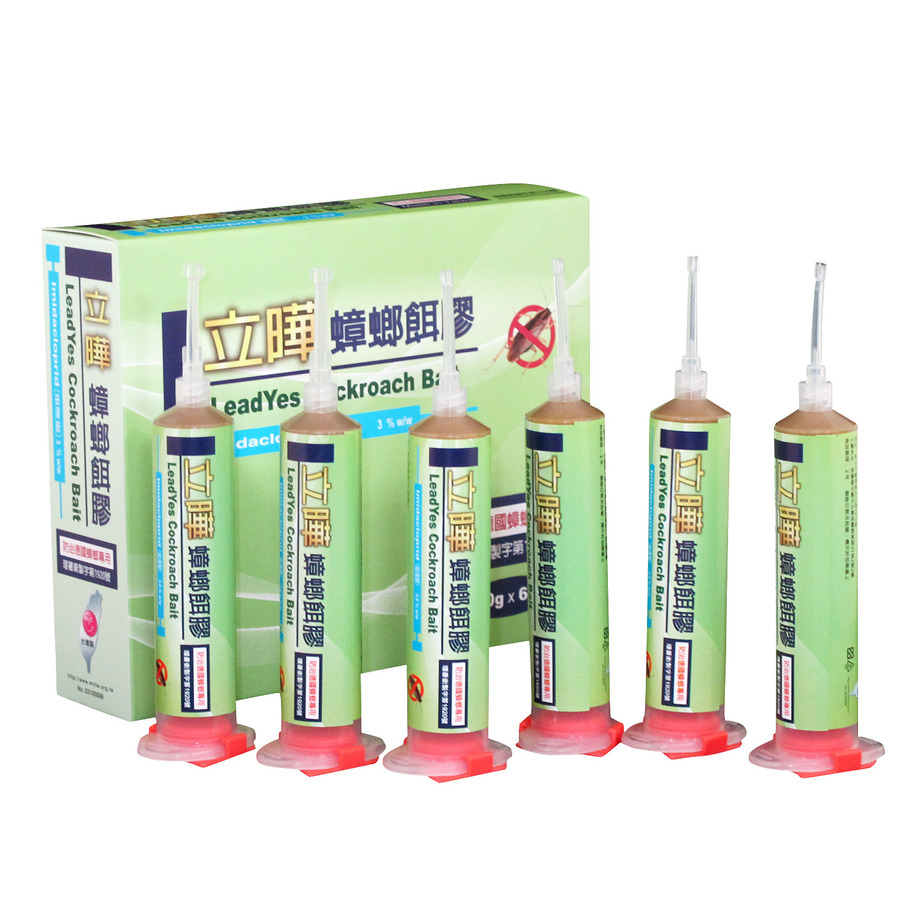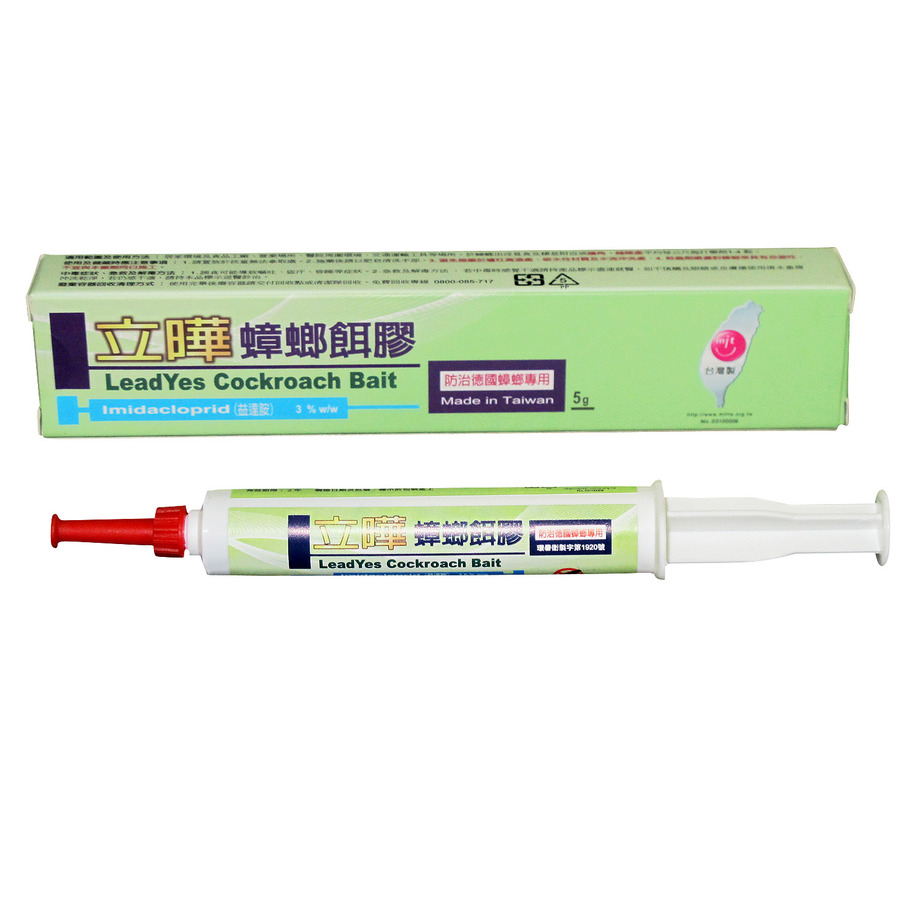Leadyes Cockroach Bait
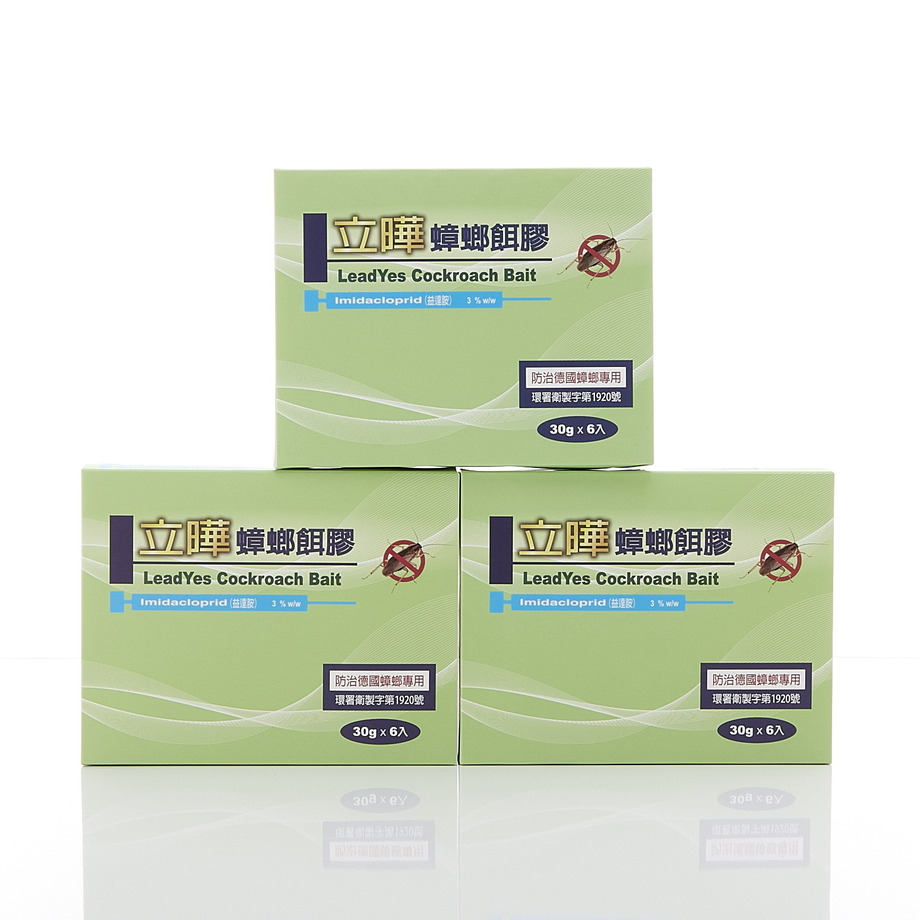 Leadyes Cockroach Bait
Leadyes Cockroach Bait
EPA Reg. No. 1920
Active Ingredient
Imidacloprid 3.0%w/w
How Leadyes Cockroach BaitWorks
Leadyes Cockroach Bait is used as an effective crack and crevice treatment to achieve a rapid reduction of German cockroach populations indoors.
Apply Leadyes Cockroach bait wherever German cockroach are seen traveling, paying special attention to points of entry and harborage areas. Inject applicator tip into small cracks and crevices where cockroaches may be hiding. Another application may include applying the bait gel as a small bead or thin film to the surface of buildings, patios, porches, window and door openings, air conditioning units, or under siding and molding, behind appliances, along baseboards, under appliances and under sink.
This formula has been specially designed to sensitive areas, making it an optimal choice for German cockroach control. Leadyes Cockroach Bait is also easy to clean for ideal use like schools, hospitals, and food-handling establishments. Leadyes Cockroach Bait is labeled for control of all species of cockroaches, especially for German roach control.
A foraging roach will receive a lethal dose from a single feeding, but lives long enough to return to the harborage where its poisoned feces are consumed by other roaches. It's all possible with Imidacloprid, the active ingredient in Leadyes Cockroach Bait that has no known resistance in roaches and is odor-free.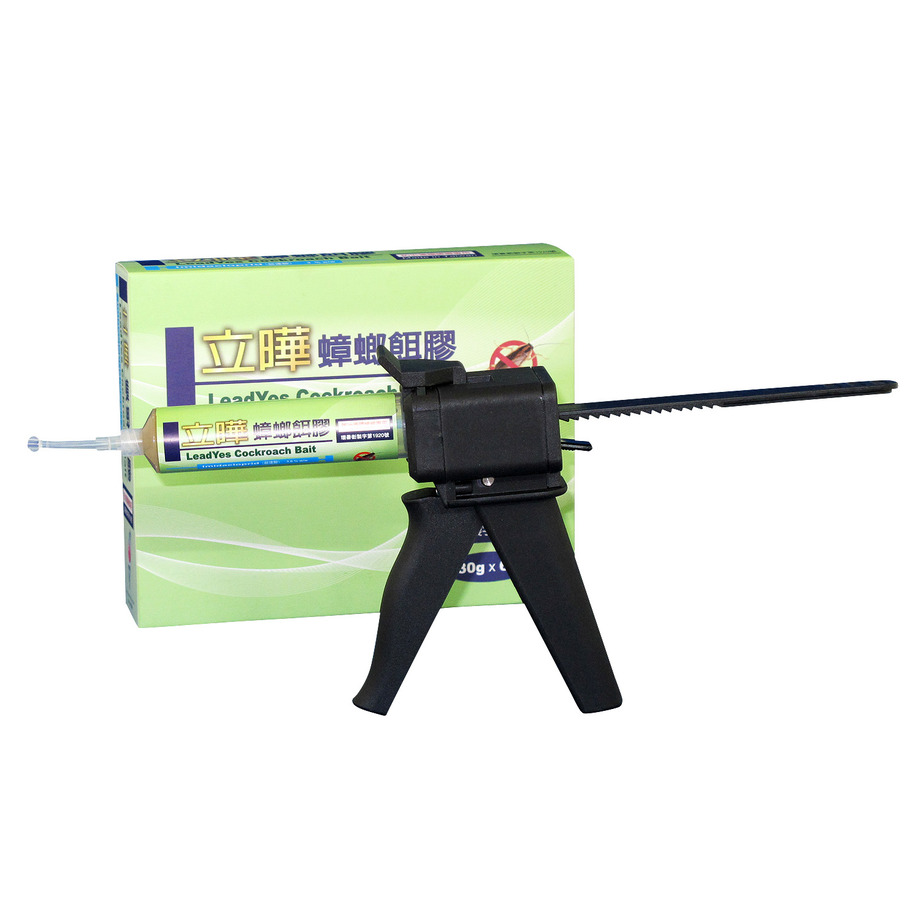
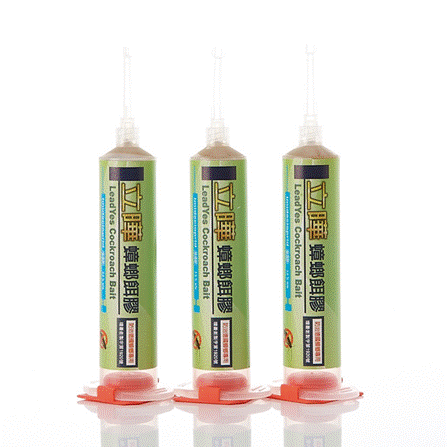
For use in the following areas and application Rates
Leadyes Cockroach Bait should be applied in green beans sized spots or droplets. Approximately 10 placements per 10Meter for light to moderate infestations
Approximately 20 placements per 10Meter for more severe or inaccessible infestations,
(such as those inside wall voids.)
Indoors and near-by (adjacent to homes and structures) in residential areas and the non-food/non-feed areas of institutional, warehousing and commercial establishments, including warehouses, restaurants, food processing plants, supermarkets, hospitals, nursing homes, motels, hotels, apartment buildings, bakeries, beverage plants, breweries, bottling facilities, candy plants, canneries, cereal processing and manufacturing plants, dairies and dairy product processing plants, frozen food plants, schools, laboratories, computer facilities, sewers, “aircraft” buses, boats/ships, trains, homes, houses, industrial buildings, office buildings, kennels, kitchens, manufacturing facilities, spice plants, stores, wineries, mausoleums, meat processing and packaging plants, meat and vegetable canneries, pet shops and zoos. Non-food/non-feed areas include bedrooms, living rooms, bathrooms, closets, media rooms, garbage rooms, lavatories, entries, vestibules, offices, locker rooms, machine rooms, boiler rooms, garages, mop closets and storage (after canning or bottling); food/feed areas of food/feed handling establishments
